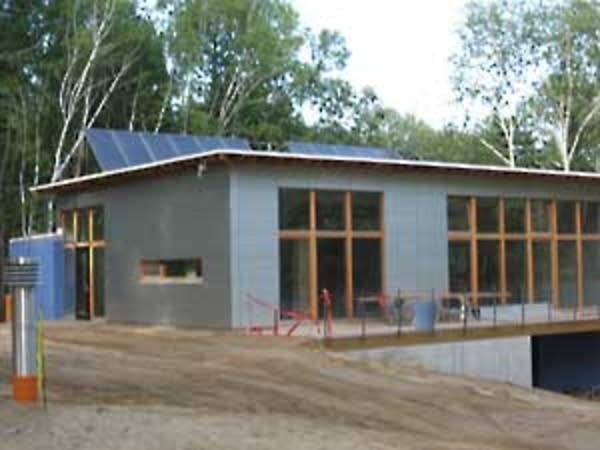Concordia language village goes green

17-year-old Elise Watley from Virginia learned a really important word this summer at the German language camp Waldsee. "Biohaus".

"I think the Biohaus is really cool, because Waldsee is kind of using it to say, 'We are going to help out the environment, kind of like Germany is,'" Watley says.
'Bio' means organic in German and the new Biohaus is like an environmentally friendly, live-in science experiment. This week, 24 kids and 4 adults are find out what it's like to roost in one of the most advanced green homes in the country. And it will all be in German; complete with metric measurements and European light switches.
"I think what is unique about this project is that it is not just sustainable living; which it is, and it is off the scale in terms of what Americans do," Hamilton says. "We are combining cultural immersion and language immersion with sustainable living."
Create a More Connected Minnesota
MPR News is your trusted resource for the news you need. With your support, MPR News brings accessible, courageous journalism and authentic conversation to everyone - free of paywalls and barriers. Your gift makes a difference.
Dan Hamilton is dean at "Waldsee". In German, the camp's name means "lake in the woods". He says people tend to associate Germany with history. But Hamilton says that Germany is a world leader in energy conservation and environmental building.

"And I think that's what Germany is bringing to the world right now," he says. "That's what young kids, when they identify with Germany, I think are going to start to look to. They will see the future now instead of the past, when they think about learning German, about the new horizons they can have for their life."
Nestled in the woods, the Biohaus certainly looks futuristic. It's a shiny silver and blue two-story building. Solar panels on the roof heat water stored in a huge tank in the basement.
As local contractors finish up work on the outside, architect Stephan Tanner says that the super-insulated aluminum facade is the first step to energy conservation. A wall of windows - shaded in the sun with high-resistant blinds - helps this building's energy efficiency in the winter, too.
"The standard in Germany has led to a totally new breed of window design," Tanner says. They don't let a lot of heat out, but at the same time, the glazing technology used on these windows let a lot of heat in."

A normal house loses two to five times its entire air volume within an hour through nooks and crannies. That's like having a four by six foot window open all year round. Stephan Tanner says that the Biohaus is more like having a plastic bag over your head.
Thank goodness for the metal pipe sticking out of the ground 100 feet away from the house.
"It is the nose of the building," Tanner explains. "It is like a straw."
Just like a human nose, he explains, the pipe sucks in fresh air. Then it carries that air through tubes in the ground. On the way, Tanner says, the earth will cool it down by 40 degrees in the summer and warm it in the winter.

He walks down to the basement. Here, the house's lungs will help keep heating costs to a bare minimum.
"It is not heating anything, it is again free here," he says. "The one air that is being exhausted, the 68 degrees on the inside of the building to the zero degree air coming in. So the fresh air goes in, but it takes on the energy of the outgoing air."
The Biohaus is organic. It not only breathes and takes in energy, it also speaks to the kids - at least in energy terms. Over the Internet, they will be able to monitor how much energy they are using. Architect Stephan Tanner says this might help them make better energy choices in the future.
"I am tempted to think the challenge for the next generation in this state is learning to manage their resources," Tanner says. "And in building that means, how can a building of the future look and how far can it go."
The Biohaus uses 90 percent less energy than mandated by Minnesota energy code. But at $250 a square foot, it also costs about 20 percent more than a comparable building. It is doubtful whether this green investment will ever pay off in green backs. But maybe it's worth it just to show kids that energy conservation doesn't have to hurt.

